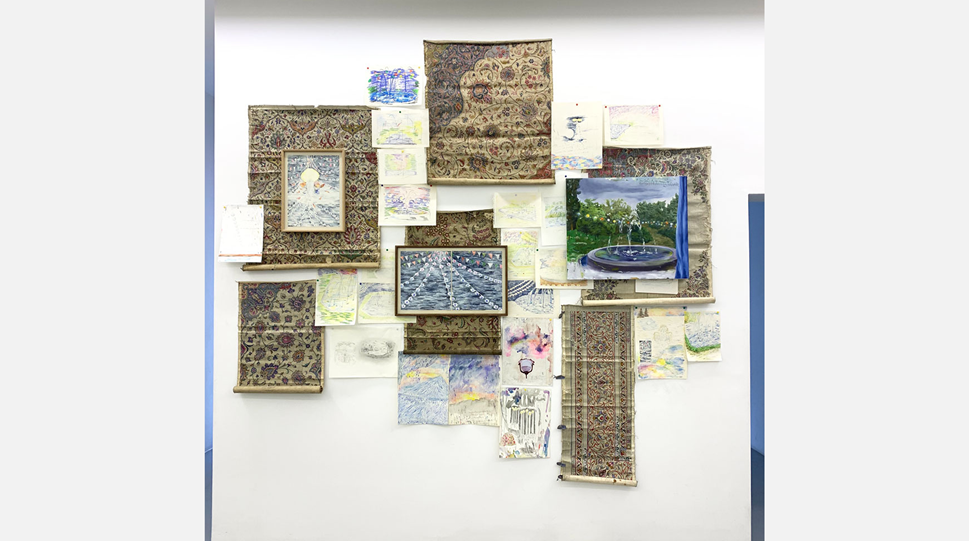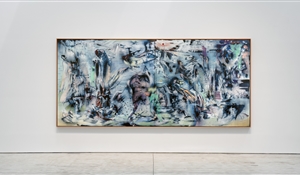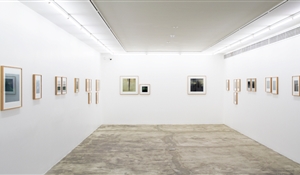A Review of Sale Sharifi's Solo Show
08 Nov 2021Original text in Farsi by Abel Hartouni
Translated to English by Soheila Habibi
Soo Contemporary hosted a show by Sale Sharifi entitled "Bygone Glory" from October 30 to November 16, 2020. The show included multiple sketches, paintings, a video installation, and collected carpet patterns from different cities. Sketches and paintings were created on paper with water-based paints (gouache, watercolor, and acrylic). Sharifi was born in 1989 in Tehran. He graduated from Fine Arts School and Azad University in painting.
A connection between the past and the present will be made by observing the title which means the magnitude of the past and by encountering the old carpet patterns, sketches from green belts, and dainty howzes in the middle. By concentrating on the Iranian garden, Sharifi iterates stories of paradises and their features in an intimate way.
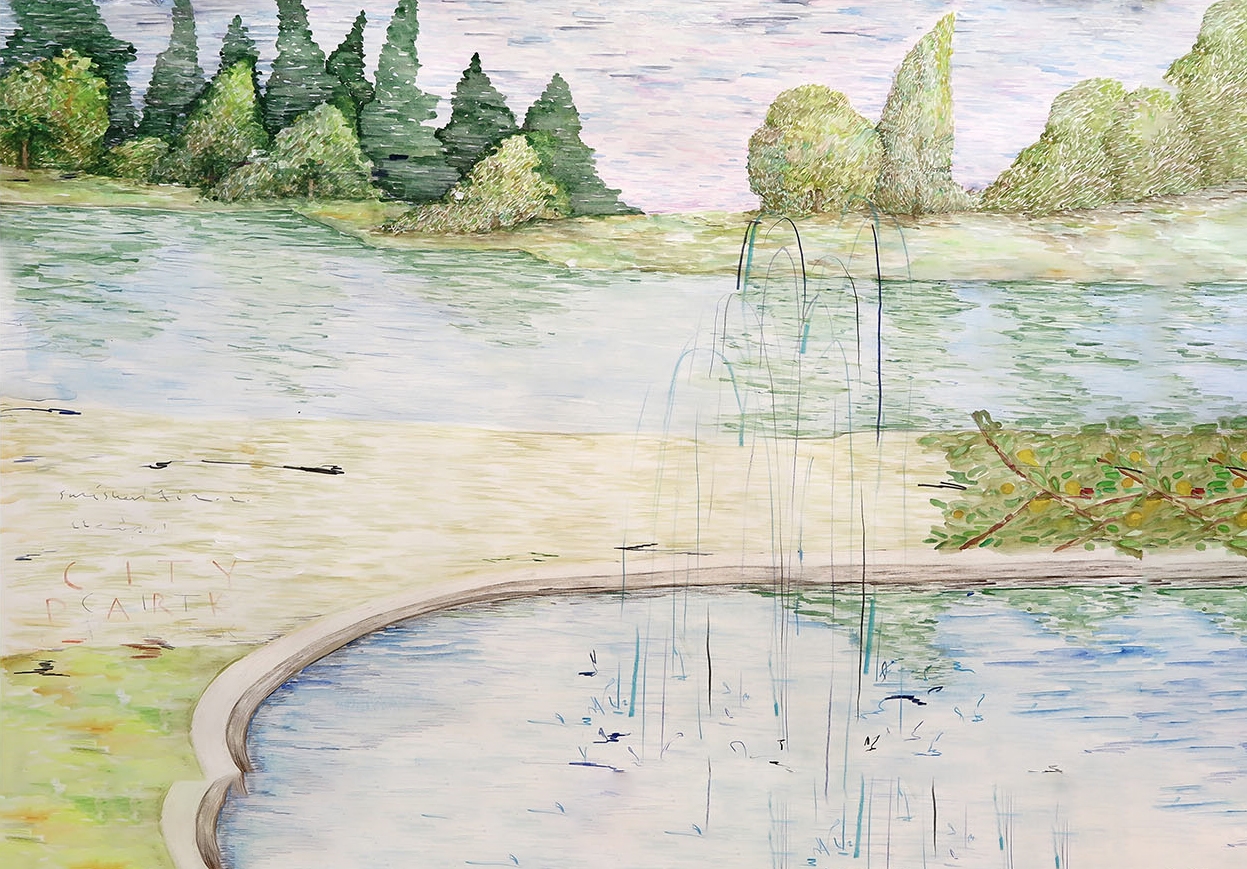
Sale Sharifi | Parke Shahr | Bygone Glory | 2020 | watercolor, gouache, acrylic, pencil on paperboard | 70 × 100 cm
According to the show's statement, gardens have lots of features in this land. Among them are historical gardens and their importance to the kings, using carpet patterns as garden patterns or vice versa, garden's similarity to the paradise, and in the end constructing and maintaining gardens in hot and dry climates.
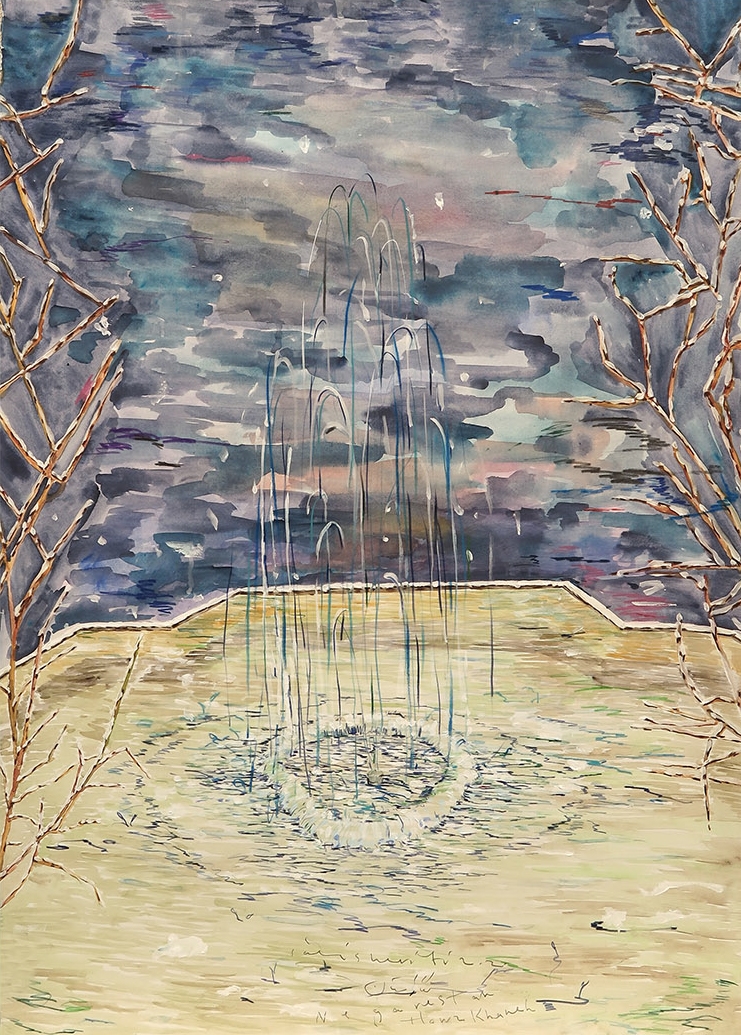
Sale Sharifi | Negarestan | Bygone Glory | 2020 | watercolor, gouache, acrylic, pencil on paperboard | 100 × 70 cm
During the last years, Sharifi has been concentrating on the historical matter. He has focused on the sociopolitical history and Iranian history specifically Safavid and Qajar eras in his research. He aims to keep his relationship with Iran's painting history, but this would continue by discovering and studying the painters and the history of this country and not just by repeating and imitating the deceased. Maybe we don't find any clear formal similarities between these paintings and Iranian historical paintings at the first glance but by a careful look at details, observing his use of stippling technique and creating surfaces of these tiny lines, one can find the liaison between present, past and the artist dialogue with past painters.
The main theme of this show is gardens with a howz being in the center. Howz is a main feature of gardens, architecture, and landscape design in Iran which had special principles in the past for its construction; it was really useful in hot and dry regions. Apart from their aesthetic, ritual, and recreational importance, howzes had a critical role in water management and weather refrigerating in hot-dry climates. Some have named them mirrors to reflect the sky. In Chardin's travelogues, Naser al-Din Shah's diaries, and Doust Ali Khan Moayyer-ol Mamalek's notes we can see the importance of howzes and the precision and sensitivity which Iranian kings used to build them. But the Iranian garden became out of the kings and nobles' monopoly, therefore that sensitivity to build them faded away. Perhaps this is the significance of the past glory for the artist.
Another charm of the Iranian howz which is important to the artist is the repetitive cycle of water inside it and the movement of the fountain. The cycle is attractive to him but it is absurd as well and reminds us of our own lives. In all of his artworks, a formal and thematic repetitive cycle can be seen; it is as if he is turning this absurd and repetitive cycle into a purely aesthetic experience.




